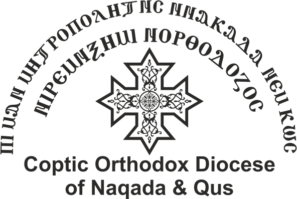Al-Assas wilderness and the ruined monasteries
AL-Assas sacred wilderness
Introduction:
Al-Assas wilderness was home to one of the greatest monasticism in the world, where monks blessed its land and caves and left behind an example to follow for loving God.
Geography:
Al-Assas wilderness is composed of the following chain of mountains:
Shama mountain
Bishwaw mountain
Al-Assas mountain
Benhodb mountain
Toukh mountain
Al-Ballas mountain
Anba Besentaous referred to the greatness of the monastic life in Al-Assas wilderness when he said to his disciple John “Let’s go to Al-Assas mountain whose monks are known for their ascetic life and pure worship and therefore they joined the ranks of the angles”.
Ruined monasteries of Naqada:
St. Phipamon monastery, Qurna mountain, Luxor.
The Apostles monastery, Qmula.
Anba Samuel El-Naqadi monastery (also known as Deir al-Qazzaz).
Anba Elias monastery, Hajer El-Mansheya.
Fr. Peter the Great monastery, Hajer El- Mansheya.
St. Epiphanius monastery, Western Qurna mountain.
St. Ephraham monastery, Shama mountain, Luxor.
St. Isaac monastery, Hajer Toukh and Al-Zawaida.
Hemoz monastery.
Dedra or Dendera monastery.
Synopsis of Anba Samuel El-Naqadi monastery (also known as Deir al-Qazzaz):
This Monastery is about 6 km southwest of Archangel Michael monastery in the area between Hajer Danfiq and Hajer El- Mansheya. The monastery is difficult to reach without a guide and the road leading to it is unpaved. It is one of the monasteries that were destroyed during the Persian invasion and only a few ruins are left. The site of the monastery was chosen with great care in the depth of a very rugged wilderness in a quiet place suitable only for hermits who practice strict asceticism.
Anba Hedra the Anchorite was the first to live in Benhodb mountain which was home to hermits from the first half of the fourth century to the first half of the seventh century. It is likely that the monastery was built at the end of the fourth century by Anba Hedra. It started as a church for the hermits and evolved into a place to look after their needs. Anba Paul, Anba Samuel El-Naqadi, and Anba Yacoub were among its abbots.
Anba Samuel monastery has several names, including:
Deir Al-Sind or Al-Sindwana, which is believed to be a distortion of the word Sant (Acacia), as it is possible that Acacia trees grew there.
Deir al-Qazzaz, which is a word for the farka maker (the person who weaves silk by hand). It is clear from this name that the monks were weaving silk to provide for their needs.
Anba Samuel El-Naqadi monastery, and it is believed that the monastery was given this name after the departure of Anba Samuel El-Naqadi, who had such a significant spiritual influence.
